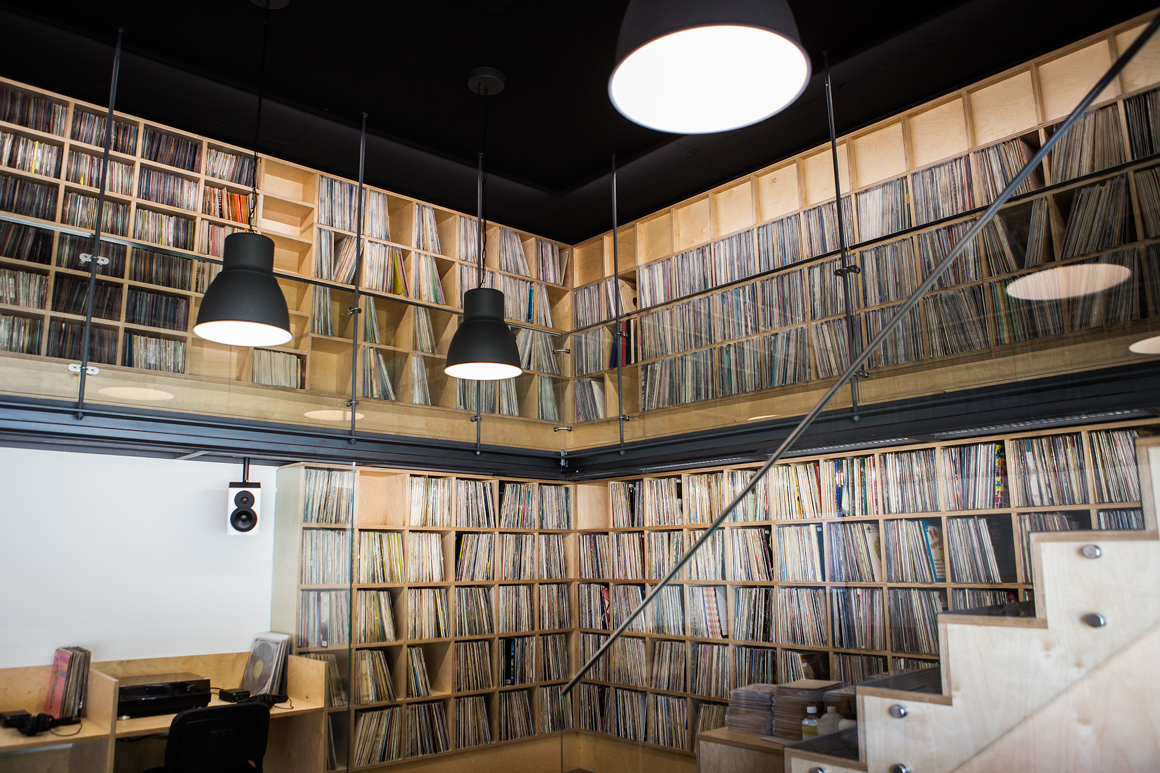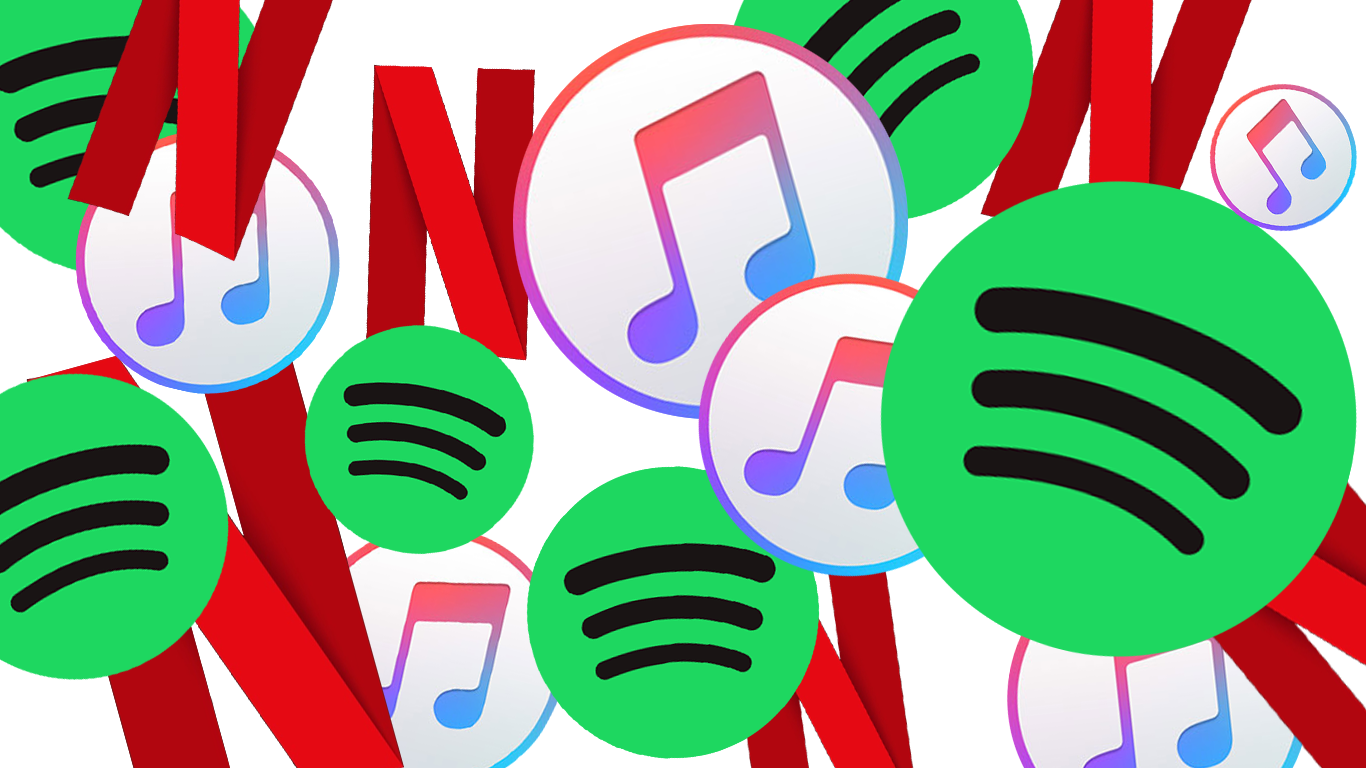Second Helpings in a Streaming Age
February 17, 2023
I originally published this article in February, 2018 as an undergrad at McGill. I think about this idea fairly frequently, and it’s something that’s increasingly relevant as more, and more, and more media becomes available (and disposable).

I’m reminded of this piece for a few reasons. This past month I visited the Fonoteca Municipal do Porto, which was amazing. It’s a public library of sorts, where the walls are lined with vinyl records accumulated over time (many donated by radio stations). Listeners enter, browse, pull what they want, and settle in next to one of several record players and headsets they offer. I found Roberta Flack’s Killing Me Softly (with its stunning rendition of “Suzanne”), Bernie Wayne’s “Blue Velvet”, Brian Eno & Cluster’s Cluster & Eno (a spectacular record), and plenty more. I think we sat there for three or four hours, sifting through albums, listening, sharing music with each other.
Since originally writing this article, I’ve ditched Spotify entirely, and mostly stick to my CDs and iTunes library for music, and try to catch as many movies as I can in theaters, including reissues (recently I caught Heat at Cinema Moderne, which was spectacular). HBO’s sunday nights have also occupied my attention when it comes to television.
It’s nice to enjoy human-authored libraries of music, film, and television, and ignore the modern, forgettable, and riskless curation of software and algorithms.

One of the first lessons we learn about the internet is that anything posted lasts forever. On the internet, everything we upload is tracked, stored, and accessible to everyone, forever. At the same time, everything posted on the internet is fleeting. A Netflix feed constantly puts forward new content; it feels like every day there’s a new banner announcing the next Netflix original series. Spotify dumps an infinite amount of music into everyone’s pockets, spewing out fresh music to be consumed as a Discover Weekly playlist or Daily Mix.
This amount of fresh, new, everlasting material is an unprecedented form of watching movies and TV shows, and diving into unheard music. And while the concept of an inexhaustible feed of new entertainment is fantastic, having this also means it’s easy to forget to come back to the old.
This fall, Kendrick Lamar re-released DAMN, less than a year after its original release. There’s one difference between DAMN and DAMN. Collector’s Edition: the order of the track listing. The collector’s edition releases the same content, just in a reversed order, changing the meaning of the original album without changing any of the content itself. The re-release is effectively a means of bringing audiences back to the album, forcing them to put it into a new perspective simply by re-listening to it.
In many ways, it represents a forced second look at an album that could have easily been swept away by the thousands of new releases over the rest of the year. Due to the accessibility of new content, media longevity has been diminished. It becomes harder for music or movies to remain at the forefront of cultural discussions for very long, even if the content has the value to carry those discussions. Re-listening to music or re-watching movies is important not just because it allows a viewer to understand that content in new ways, but because it means that media can have more of an impact on conversations, societal ideas, and individuals.
“Coming back to an album you listened to on repeat in high school might actually have something to it beyond mere nostalgia
The media I like most is often the media I return to most. I’ll find myself clicking the same album over and over again, unable to move onto something new. The streaming age tries to prevent this experience, as it offers bait that makes it so much harder to come back to something. There’s something special about the slow burn of enjoying something over and over: noticing the little details bit by bit, understanding the meaning behind something, and watching that meaning change over time. Slowly falling in love with an album, movie, or artist is being replaced with the virality of modern consumption – a method of listening and watching that means that before you can truly enjoy the last item, the next one is being served.
I’ve found the best way to milk the most from every song, album, movie, or whatever other media is out there, is to limit myself. Keeping an iTunes library means you can’t click through millions of songs but must instead find your (relatively) few favourites and recycle through them. I have a folder of pirated movies, and whenever I’m in the mood for a movie night, I’ll pick from there. I can’t pick from an selection of choices curated by someone else, so my choice in what I watch matters more. It also means I can come back to the films at any time, skimming through scenes, or opening it randomly to find a specific shot or image.
I don’t mean to say that Netflix or Spotify or any of the hundreds of other streaming services are entirely problematic or ruining the way we consume entertainment. Without Spotify, for instance, there are hundreds of artists I could have never possibly heard of or listened to, because they aren’t easily accessible anywhere else. Likewise, Netflix produces incredible original series, many of which likely would never have been picked up by a traditional television network, simply because they cater to an incredibly niche audience only a streaming service can reach. Rather, it’s worth calling attention to the ways they change the way we consume entertainment and remind ourselves of the unique benefits of a smaller library that promotes revisiting the entertainment we care about most.
“Slowly falling in love with an album, movie, or artist is being replaced with the virality of modern consumption – a method of listening and watching that means that before you can truly enjoy the last item, the next one is being served
Instead of opting for a new show that could either be a complete dud or the next big thing, coming back to older content can be just as entertaining of an experience. Returning to an old show or movie has its own value in offering a chance to re-contextualize it and finding new meaning that simply couldn’t be found in a different frame of mind. In the “Watch it Again” section of your Netflix feed, one show I’d recommend revisiting is Breaking Bad, which ended five years ago but holds just as much intensity and weight as it did at its release. Most people picked it up then or just after, not coming back for seconds—but man, are seconds of Breaking Bad rewarding.
Finding value in a new, previously overlooked detail is perhaps more meaningful than equating value with novelty itself, as it’s an entirely unexpected way to revisit the old, the comfortable, and the familiar. Though it may seem an entirely absurd prospect, coming back to an album you listened to on repeat in high school might actually have something to it beyond mere nostalgia.
To really find meaning in the content, it’s important to avoid the thrill of jumping from song to song, movie to movie, and instead to pause, rewind, and redo it all. Rather than skipping to the next item, return to the last, slowing down the experience to milk it for everything it’s worth. After all, if you’re going to just consume something once and never think about it again, is it even worth your time in the first place?